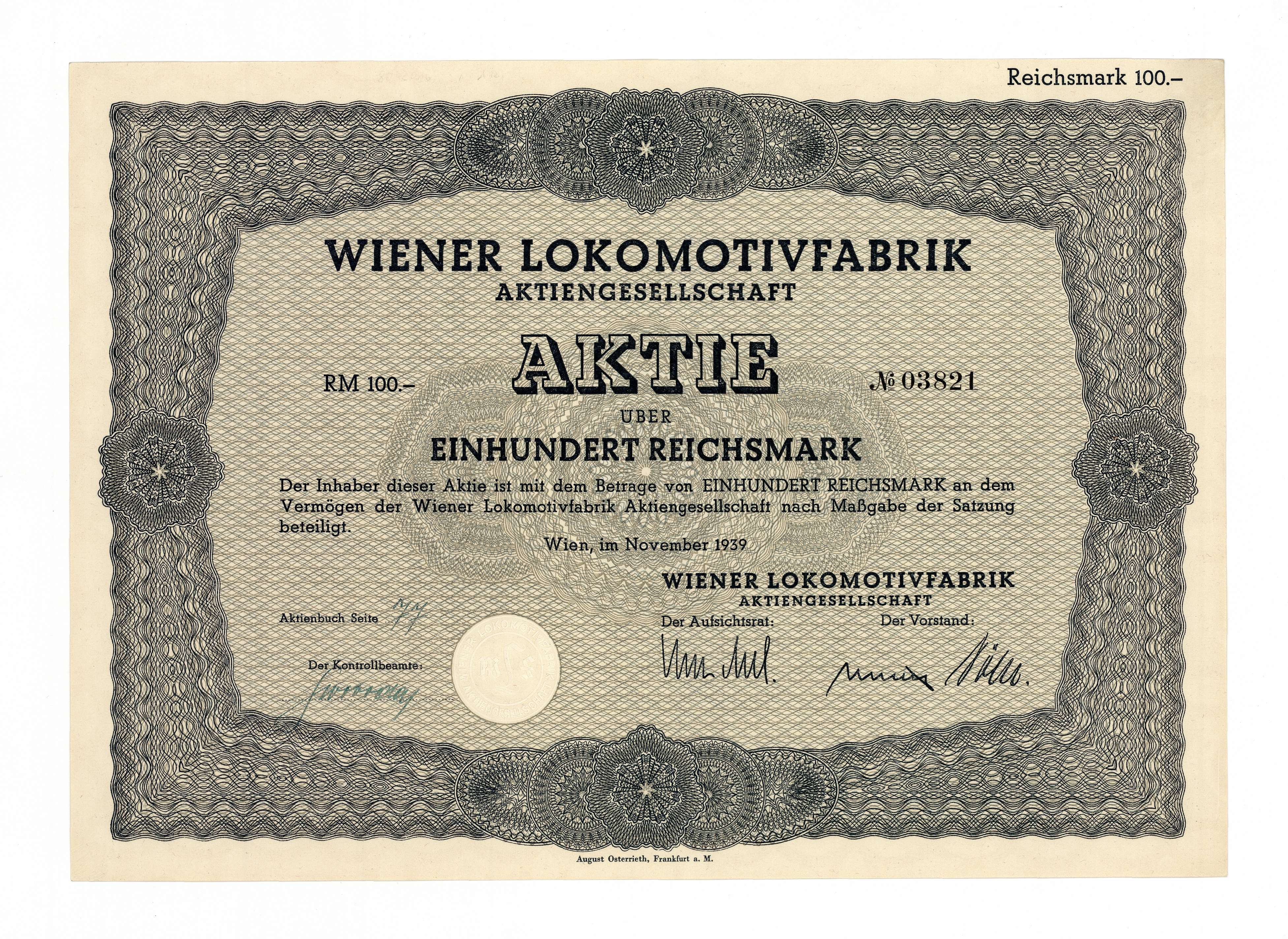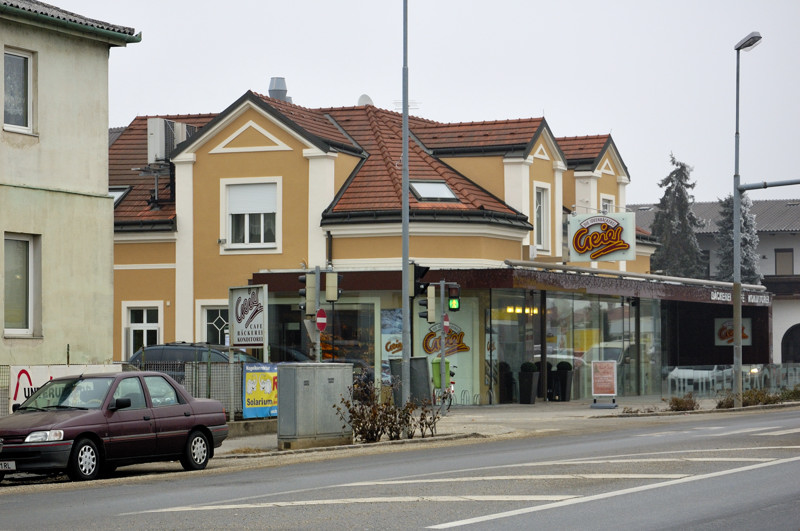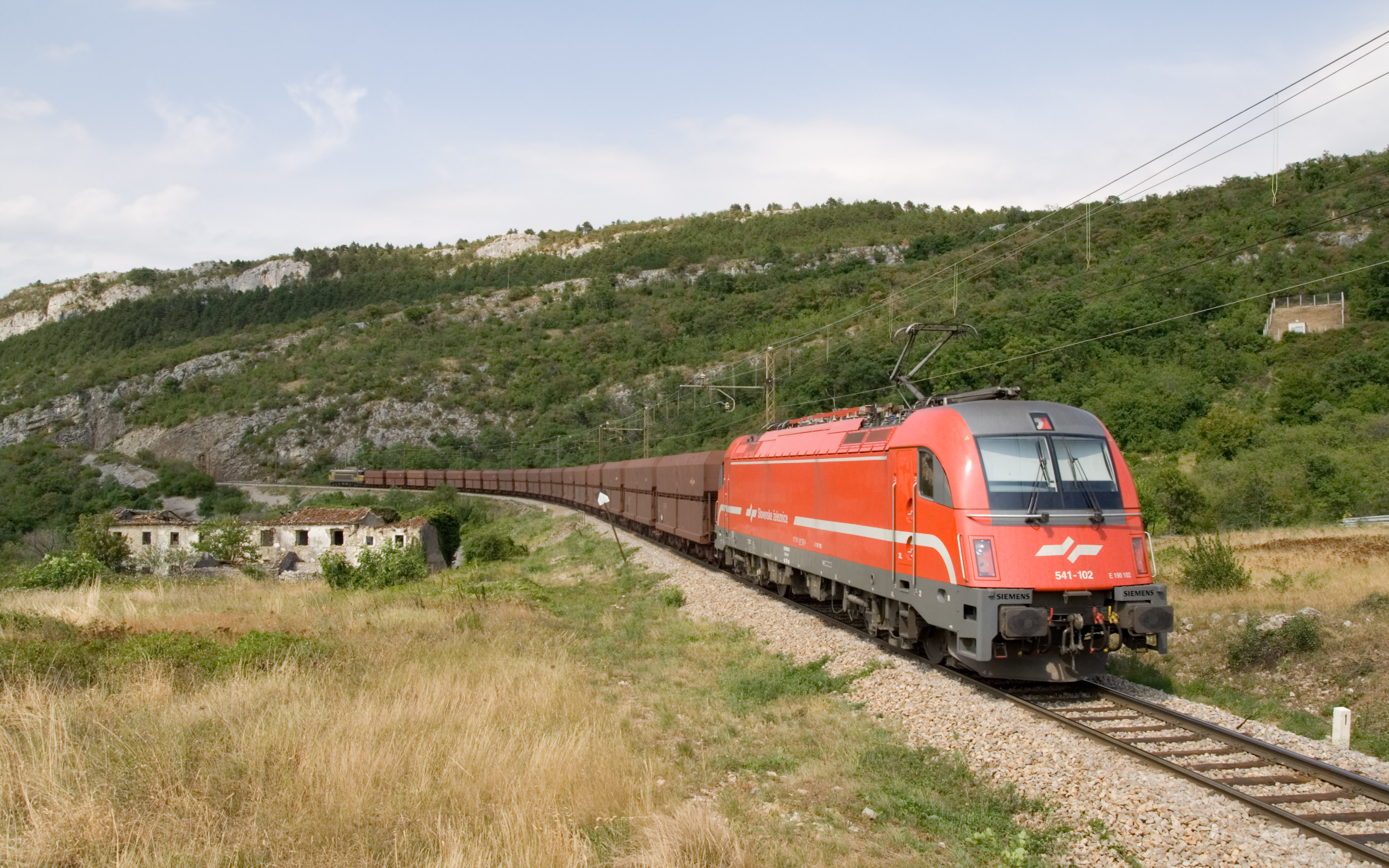|
KkStB 269
The kkStB 269 was class of three rack railway 0-12-0 tank engines of the Imperial Royal Austrian State Railways (''k.k. österreichische Staatsbahnen'', kkStB) designed to work on the Erzberg Railway (''Erzbergbahn'') in Styria. History As early as 1911, the ''Erzbergbahn'' was no longer able to cope with operation with the 18 existing steam locomotives of the kkStB 69, 69 series. Since a double-track expansion of the line was not possible, more powerful locomotives were required. On behalf of the kkStB, chief designer Karl Gölsdorf designed the class 269 rack railway steam locomotives; they were constructed by Lokomotivfabrik Floridsdorf in Vienna. The result was a six-axle tank locomotive with the axle formula Fn4zzt: six coupled driving axles in a rigid frame and a gear drive with two gear wheels. This seldom used design as a twelve-coupled could transport on this route at and should avoid the use of bank engine, banker (pusher) locomotives. In 1912 the three new steam ... [...More Info...] [...Related Items...] OR: [Wikipedia] [Google] [Baidu] |
Lokomotivfabrik Floridsdorf
Lokomotivfabrik Floridsdorf (Floridsdorf locomotive factory) was an Austrian locomotive works founded on 6 September 1869 that achieved a pre-eminent place amongst European locomotive builders thanks to the quality and diversity of its designs. Common abbreviations for the company include Flor, WLF (''Wiener Lokomotivfabrik Floridsdorf'') and LOFAG (''Lokomotivfabrik Floridsdorf AG''). Lokomotivfabrik Floridsdorf was the third factory of its type to emerge in Austria following the Lokomotivfabrik der Staatseisenbahngesellschaft (''StEG'', Vienna) and that of Georg Sigl, the '' Wiener Neustädter Lokomotivfabrik'', both based in Vienna. History The site of the factory, which was founded in 1869, was a piece of open land in Floridsdorf near Vienna between the North railway and the Northwest railway. The generously scaled factory site was erected in 1870/71 by Bernhard Demmer – previously technical director with the ''StEG''. In addition to the buildings needed for producti ... [...More Info...] [...Related Items...] OR: [Wikipedia] [Google] [Baidu] |
KkStB 169
The Imperial-Royal State Railways () abbr. ''kkStB'') or Imperial-Royal Austrian State Railways (''k.k. österreichische Staatsbahnen'',The name incorporating "Austrian" appears, for example, in the 1907 official state handbook (''Staatshandbuch'') and on the title page of the Imperial-Royal Railway Ministry publication''Die neuen österr(eichischen) Alpenbahnen'' Maass’ Söhne, Vienna, 1908.) was the state railway organisation in the Cisleithanian (Austrian) part of the Austro-Hungarian Monarchy. History The introduction of railway traffic in the Austrian Empire had been pushed by pioneers like physicist Franz Josef Gerstner (1756–1832), who advocated a railway connection from the Vltava basin across the Bohemian Massif to the Danube river. After in 1810 a first long horse-drawn railway line was built at the Eisenerz mine in Styria for the transport of iron stones, in 1832 a wagonway between Austrian Linz and České Budějovice (Budweis) in Bohemia opened. It was long and ... [...More Info...] [...Related Items...] OR: [Wikipedia] [Google] [Baidu] |
Standard-gauge Locomotives Of Austria
A standard-gauge railway is a railway with a track gauge of . The standard gauge is also called Stephenson gauge (after George Stephenson), international gauge, UIC gauge, uniform gauge, normal gauge in Europe, and SGR in East Africa. It is the most widely used track gauge around the world, with about 55% of the lines in the world using it. All high-speed rail lines use standard gauge except High-speed rail in Russia, those in Russia, High-speed rail in Finland, Finland, High-speed rail in Uzbekistan, Uzbekistan, and some line sections in High-speed rail in Spain, Spain. The distance between the inside edges of the heads of the rails is defined to be 1,435 mm except in the United States, Canada, and on some heritage British lines, where it is defined in Imperial and US customary measurement systems, U.S. customary/Imperial units, British Imperial units as exactly "four feet eight and one half inches", which is equivalent to 1,435.1mm. History As railway Rail transport ... [...More Info...] [...Related Items...] OR: [Wikipedia] [Google] [Baidu] |
Railway Locomotives Introduced In 1912
Rail transport (also known as train transport) is a means of transport using wheeled vehicles running in railway track, tracks, which usually consist of two parallel steel railway track, rails. Rail transport is one of the two primary means of land transport, next to road transport. It is used for about 8% of passenger and rail freight transport, freight transport globally, thanks to its Energy efficiency in transport, energy efficiency and potentially high-speed rail, high speed.Rolling stock on rails generally encounters lower friction, frictional resistance than rubber-tyred road vehicles, allowing rail cars to be coupled into longer trains. Power is usually provided by Diesel locomotive, diesel or Electric locomotive, electric locomotives. While railway transport is capital intensity, capital-intensive and less flexible than road transport, it can carry heavy loads of passengers and cargo with greater energy efficiency and safety. Precursors of railways driven by human or an ... [...More Info...] [...Related Items...] OR: [Wikipedia] [Google] [Baidu] |
Floridsdorf Locomotives
Floridsdorf (; ) is the 21st district of Vienna, Austria (''21. Bezirk''). Located north of the Danube, it comprises former villages such as Floridsdorf, Donaufeld, Jedlesee, Leopoldau, Stammersdorf, Strebersdorf, and Groß-Jedlersdorf. With a population of over 189,000 in 2025, it is Vienna’s third most populous district and one of the fastest growing. Floridsdorf is known for its blend of urban infrastructure and green spaces, including vineyards, parks, and historical architecture Geography Floridsdorf lies in the northeastern part of Vienna, on the left bank of the Danube. It is bordered to the south and west by the Danube River (across which lie the districts of Brigittenau and Döbling), to the east by the 22nd District (Donaustadt), and to the north by Lower Austria. The terrain is diverse: the northwest includes the gentle foothills of the Bisamberg (a hill of which 320 m lies within the district), while the southeast is a flat plain formed by the Danube’s old floodp ... [...More Info...] [...Related Items...] OR: [Wikipedia] [Google] [Baidu] |
Imperial Royal Austrian State Railways Steam Locomotives
Imperial is that which relates to an empire, emperor/empress, or imperialism. Imperial or The Imperial may also refer to: Places United States * Imperial, California * Imperial, Missouri * Imperial, Nebraska * Imperial, Pennsylvania * Imperial, Texas * Imperial, West Virginia * Imperial, Virginia * Imperial County, California * Imperial Valley, California * Imperial Beach, California Elsewhere * Imperial (Madrid), an administrative neighborhood in Spain * Imperial, Saskatchewan, a town in Canada Buildings * Imperial Apartments, a building in Brooklyn, New York * Imperial City, Huế, a palace in Huế, Vietnam * Imperial Palace (other) * Imperial Towers, a group of lighthouses on Lake Huron, Canada * The Imperial (Mumbai), a skyscraper apartment complex in India * Imperial War Museum, a British military museum and organisation based in London, UK * * Imperial War Museum Duxford, an aviation museum in Cambridgeshire, UK * * Imperial War Museum North, a milita ... [...More Info...] [...Related Items...] OR: [Wikipedia] [Google] [Baidu] |
Strasshof Railway Museum
Strasshof an der Nordbahn (meaning ''Strasshof at the Northern railway''; Central Bavarian: ''Strasshof aun da Noadbauh'') is a satellite town 25 km east of Vienna, Austria. A historical locomotive built by LOFAG is displayed in the town. Geography Strasshof an der Nordbahn lies in Marchfeld in Lower Austria. About 21.08 percent of the municipality is forested. History Strasshof had about 50 inhabitants in 1900, and a railroad yard functioned from 1908 to 1959. In 1944, about 75 percent of 21,000 Hungarian Jews deported from a concentration camp at Strasshof survived due to an agreement between the Aid and Rescue Committee of Budapest and Adolf Eichmann. On 2 December 1944 the marshalling yard in "Straszhof" was targeted in a United States Army Air Forces bombing by the 47th Bombardment Wing. There was solid overcast over the city causing the wing to bomb Wien Floridsdorf Shell Refinery as an alternative. The west marshalling yard was bombed on 26 March 1945 by the 49 ... [...More Info...] [...Related Items...] OR: [Wikipedia] [Google] [Baidu] |
Giesl Ejector
A Giesl ejector is a suction draught system for steam locomotives that works on the same principle as a Injector, feedwater injector. This ejector (German: , or ) was invented in 1951 by the Austria, Austrian engineer, Dr. Adolph Giesl-Gieslingen. The Giesl ejector ensures improved suction draught and a correspondingly better use of energy. The existing blastpipe in a locomotive is replaced by several, small, fan-shaped, diverging blast pipes, from which the diffuser gets its flat, long, drawn-out shape. Fuel savings Giesl claimed that his ejector enabled a saving in coal of 6–12% – although in practice the maximum saving was closer to 8% – and an increase in power of up to 20%. Many railway administrations converted their steam engines to use Giesl ejectors, including the Österreichische Bundesbahnen, ÖBB, ČSD and Deutsche Reichsbahn (GDR), Deutsche Reichsbahn (DR) in East Germany, as well as railway companies in Africa, China and in Japanese National Railways, Japan ( ... [...More Info...] [...Related Items...] OR: [Wikipedia] [Google] [Baidu] |
ÖBB
The Austrian Federal Railways ( , formally or () and formerly the or ''BBÖ'' ), now commonly known as ÖBB (), is the national railway company of Austria, and the administrator of Liechtenstein's railways. The ÖBB group is owned entirely by the Republic of Austria, and is divided into several separate businesses that manage the infrastructure and operate passenger and freight services. The Austrian Federal Railways has had two discrete periods of existence. It was first formed in 1923, using the ''Bundesbahn Österreich'' name, as a successor to the Imperial Royal Austrian State Railways (kkStB), but was incorporated into the ''Deutsche Reichsbahn'' during the 1938–1945 Anschluss. It was reformed in 1947, under the slightly different name ''Österreichische Bundesbahnen'', and remains in existence in this form. Major changes currently being made to the Austrian railway network are the construction of the Koralm Railway, the Semmering Base Tunnel and t ... [...More Info...] [...Related Items...] OR: [Wikipedia] [Google] [Baidu] |
Deutsche Reichsbahn
The ''Deutsche Reichsbahn'' (), also known as the German National Railway, the German State Railway, German Reich Railway, and the German Imperial Railway, was the Weimar Republic, German national Rail transport, railway system created after the end of World War I from the regional railways of the individual states of the German Empire. The ''Deutsche Reichsbahn'' has been described as "the largest enterprise in the capitalist world in the years between 1920 and 1932"; nevertheless, its importance "arises primarily from the fact that the Reichsbahn was at the center of events in a period of great turmoil in German history". Overview The company was founded on 1 April 1920 as the ("German Imperial Railways") when the Weimar Republic, which still used the nation-state term of the previous monarchy, (German Reich, hence the usage of the in the name of the railway; the monarchical term was ), took national control of the German railways, which had previously been run by the Ger ... [...More Info...] [...Related Items...] OR: [Wikipedia] [Google] [Baidu] |
Bank Engine
A bank engine (United Kingdom/Australia) (colloquially a banker), banking engine, helper engine or pusher engine (North America) is a railway locomotive that temporarily assists a train that requires additional power or traction to climb a gradient (or ''bank''). Helpers/bankers are most commonly found in mountain divisions (called "helper districts" in the United States), where the ruling grade may demand the use of substantially greater motive power than that required for other grades within the division. Historic practice Helpers/bankers were most widely used during the age of steam, especially in the American West, where significant grades are common and trains are long. The development of diesel-electric or electric locomotives has eliminated the everyday need for bankers/helpers in all but a few locations. With the advent of dynamic brakes on electric or diesel-electric locomotives, helpers/bankers can also be used to provide more braking force on long downhill gradi ... [...More Info...] [...Related Items...] OR: [Wikipedia] [Google] [Baidu] |







